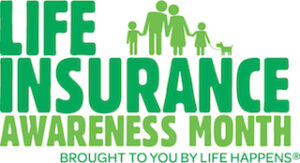In this article, we’re covering the top final expense carriers for 2016 from the perspective of an “in-the-trenches” final expense life insurance agent. Typically, most “perspectives” regarding final expense carriers come from marketers. And commonly marketers have zero final expense selling experience, and couldn’t sell themselves out of a wet paper bag if they tried.
So without further ado, let’s go into detail regarding the 8 top final expense carriers to work with for 2016, as well as covering the pros and cons of each carrier.
1) Security National Life Insurance. Security National has been in the final expense business for a number of years, and recently has ramped its final expense presence, largely due to its agent-friendly application, easy underwriting, and its singular underwriting requirement of only a prescription check to issue the final expense policy.
This is one of my favorite carriers for agents new to final expense as Security National’s application is only 5 pages in length, extremely simple to complete, and very easy to work with. One benefit of working with Security National is the 10% lead bonus earned after issuing $1,000 or more in production. Also, Security National has an in-house follow-up team whose job is to call on lapses that occur.
Security National offering these benefits improves both persistency and issued-as-applied-for rates relative to other carriers, minimizing the “back and forth” problems non-point-of-sale carriers like Security National tend to have.
The drawbacks to Security National are minor in scope. Policy fees are non-commissionable. Commission drops slightly in certain age bands above 70 years of age. Nevertheless, the benefits outweigh the drawbacks, making Security National an ever-growing player that’s here to stay in the final expense business.
2) Family Benefit/Trinity Life Insurance. Family Benefit Life and Trinity Life are the same company, but with different names, depending on the state you sell them. They reign from Tulsa, Okla., and are a relatively newer entry to the final expense market.
Family Benefit/Trinity Life has some of the lowest premium rates for Level business, one of the easiest and quickest point of sale interview processes, and has considerable underwriting flexibility relative to its low premiums. This is a great carrier for an agent looking for an “agent-friendly” final expense company, and appreciates the communication and accessibility advantages of a carrier smaller in stature.
The biggest drawback of Family Benefit/Trinity Life is its singular goal of wanting only the healthiest applicants. There is little else you as an independent final expense agent will want to place with them. For example, your prospects with conditions like COPD, Hepatitis, liver issues and some neurological problems will be offered an unusual Graded product that typically does not give as thorough coverage as found with other carriers. Truth be told, Family Benefit/Trinity Life structured their product for this very reason; they’re not interested in riskier final expense business.
All in all, of all the carriers in my Top 10 List, there are not many that are as easy to work with than Family Benefit/Trinity Life. Agents new to final expense that start with Family Benefit/Trinity Life love working with them. They make the process of selling final expense easier, and I see no reason why new business production not continue to grow during 2016.
3) United Heritage. Like Family Benefit/Trinity Life, United Heritage is another smaller final expense player, yet offers a well-rounded final expense product. Rates are competitive; not the lowest, yet not the highest. United Heritage offers a solid Graded product that covers a multitude of health issues, and the Level and Graded plans pay full commission at all available ages. This is great, as most final expense companies aggressively cut commissions – sometimes by 30 percentage points – due to advanced age or because of health issues. Additionally, United Heritage has a great back office support team. They’re very customer-friendly, agent-friendly, and simple to deal with.
The drawbacks of United Heritage are a few that sometimes are concerning. The first of which is how frequently they pull medical records on final expense prospects. I am a regional marketing organization for United Heritage, thus I do a considerable amount of final expense business with them. While non-point-of-sale carriers tend to do attending physician statements and rate up business more often than point-of-sale interview carriers do, my experience shows they pull more records than the average non-point-of-sale carrier. The outcomes include delayed product issue and higher not-taken rates.
Regardless, United Heritage offers a well-balanced and versatile final expense product with plenty of advantages, and as long as agents take care to effectively field underwrite, delays in issue can be minimized, and United Heritage can be a great core carrier to write a lot of business with.
4) Standard Life And Casualty. I’ve worked with Standard Life And Casualty on a limited basis for the past few years, and incidentally have placed more business with them over the past year and have gained some good insight as to what it’s like working with them.
In many states, Standard Life And Casualty is the low price leader. But, despite being commonly the most competitive final expense carrier option, they tend to offer fairly flexible underwriting. You can get a lot through them that may be an issue with some companies, but will be accepted with Standard Life.
In my experience with Standard Life And Casualty, there are only two drawbacks. First, those receiving disability payments of any kind are not eligible for coverage. Second, commission levels are usually set lower than normal to offset the low prices. Nevertheless, Standard Life is a must-have niche player for myself and my team of agents. They may not necessarily be a “bread and butter” carrier to do the bulk of your business with, but they are fantastic to use when you otherwise couldn’t make the sale due to a competitively priced incumbent policy.
5) Foresters. Foresters continues to be a major player in the final expense business. Ever since I began selling final expense in 2011, Foresters was one of the most popular final expense carriers among agents, offering very competitive premiums. Shortly thereafter, they had a price increase to cull new production volume, but now in its present form have become price-competitive again in combination with offering reasonably flexible underwriting. Their marketing team is great to work with, the product is well designed, and is very easy to use as a bread and butter carrier. Lots of agents like them and continue to put more business with Foresters as time goes on.
I see a few drawbacks to Foresters’ final expense product. Foresters tightened up on diabetic issues such as diabetic neuropathy. They do have a longer look back on a few health issues like cancer compared to other carriers. Nevertheless, they do pretty well in a lot of situations and have their niches, especially for people who take insulin without any sort of complications.
More from David Duford:
- Choosing the right kind of lead for new final expense agents
- Selling final expense: 7 fundamental steps every new final expense agent must follow
• Editor’s Note: This article was submitted by Insurance Forums member David Duford (Screen name: Rearden) ofFinal Expense Agent Mentor. To comment on his list of top FE carriers for 2016 or add your own thoughts on which carriers should or should not be included on such a list, please visit this new thread in the Final Expense Forum:Agent’s Ranking of Top FE Carriers for 2016
6) Transamerica. Selling Transamerica’s final expense product is what I would consider to be a “love or hate relationship.” There’s certainly much to love about Transamerica. They do an excellent job with the Social Security Billing with the growing Direct Express payment market. Transamerica’s has some of the most flexibility in regards to health and prescription underwriting. They underwrite largely on a “first event” basis for a number of normally difficult-to-underwrite cases. COPD, nitroglycerin, and blood thinner usage in some cases can be approved Standard or Level. Transamerica’s pricing is balanced, meaning it’s competitive but not necessarily the least expensive.
The biggest drawback with Transamerica is having new final expense agents using them. I don’t recommend Transamerica as a lead company in most circumstances as a new final expense agent. Why? Because Transamerica is one of the most notoriously difficult applications in the final expense field to master. Most Transamerica applications require 4, 5, even 6 signatures and dates to issue. And the more opportunity for error, the higher chances Transamerica will request amendments and follow-up appointments for signatures, further delaying issue of your client’s coverage, thus further delay of your commission. Added to that is that Transamerica has no point-of-sale option increases the potential for rate-ups and policies ultimately not being issued.
But all in all, as you develop as an agent and your attention to detail improves, Transamerica is a carrier to pick up for some of its definite underwriting advantages.
7) Aetna/American Continental Life Insurance. American Continental has always been a great final expense product to have available. It wasn’t until earlier in 2015 that American Continental’s new owner Aetna rolled out some basic prescription checks. Nevertheless, the product remains handy for specific health ailments and when you otherwise cannot get coverage due to prescription issues normally a problem with other carriers. American Continental’s rates aren’t the best, but generally good enough to confidently write with.
The only drawback American Continental has now is that they do not pay commission on ages 45 to 59. That’s too bad as American Continental is one carrier I would write more often if they were available at those ages. Other than that, American Continental is a great carrier to write with under certain underwriting situations.
8) Columbian Financial Group. Columbian has never been of interest to me as a final expense product, but with some underwriting changes on the horizon, they’re looking to be a more formidable final expense player in the independent agent category. Columbian is the process of releasing a more competitively priced product, equivalent to Oxford Life or Foresters premium design, in conjunction with their current standard and modified plan offerings.
The biggest draw to Columbian, and why they’re marketed so heavily is that many times managers have the ability to pull in a large override on renewals that otherwise cannot be had with other final expense carriers. New final expense agents commonly get criminally low renewals while their managers make a killing off of the renewal spread.
Columbian’s always been a pretty simple carrier to work with, and many agents like writing them because they are simple. I think you’ll see Columbian taken more seriously by independent agents not housed in quasi-captive situations if their new product is both competitively priced and easier to underwrite.
And that’s my review of the top 8 final expense carriers to watch for during 2016. I think we’ll see a lot of carriers change, exit the final expense business, and new carriers get involved in the marketplace.
• Editor’s Note: This article was submitted by Insurance Forums member David Duford (Screen name: Rearden) ofFinal Expense Agent Mentor. To comment on his list of top FE carriers for 2016 or add your own thoughts on which carriers should or should not be included on such a list, please visit this new thread in the Final Expense Forum:Agent’s Ranking of Top FE Carriers for 2016
More from David Duford:













